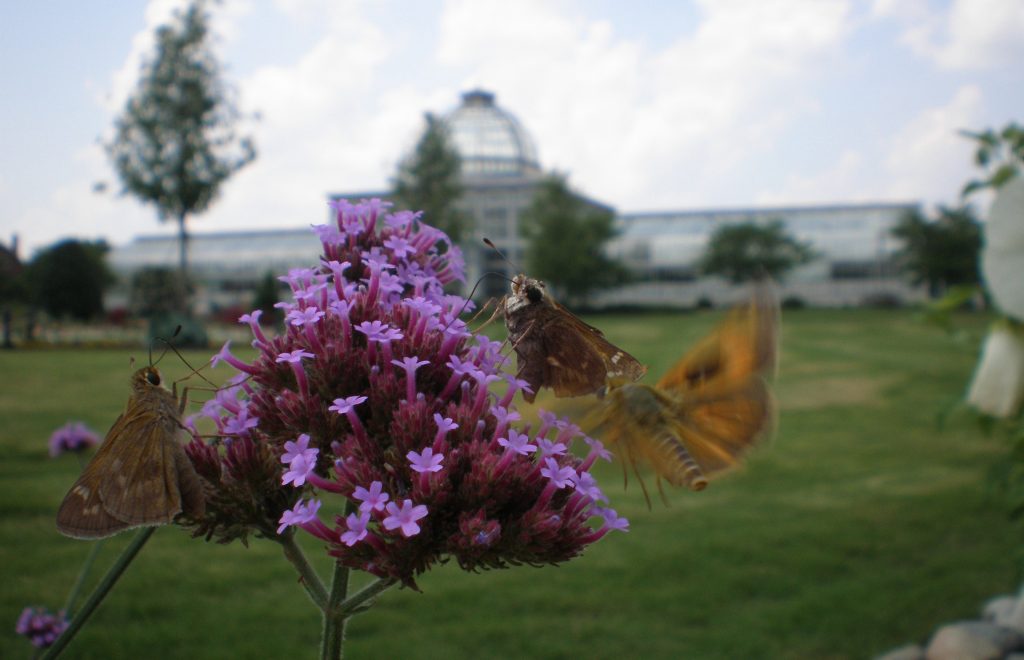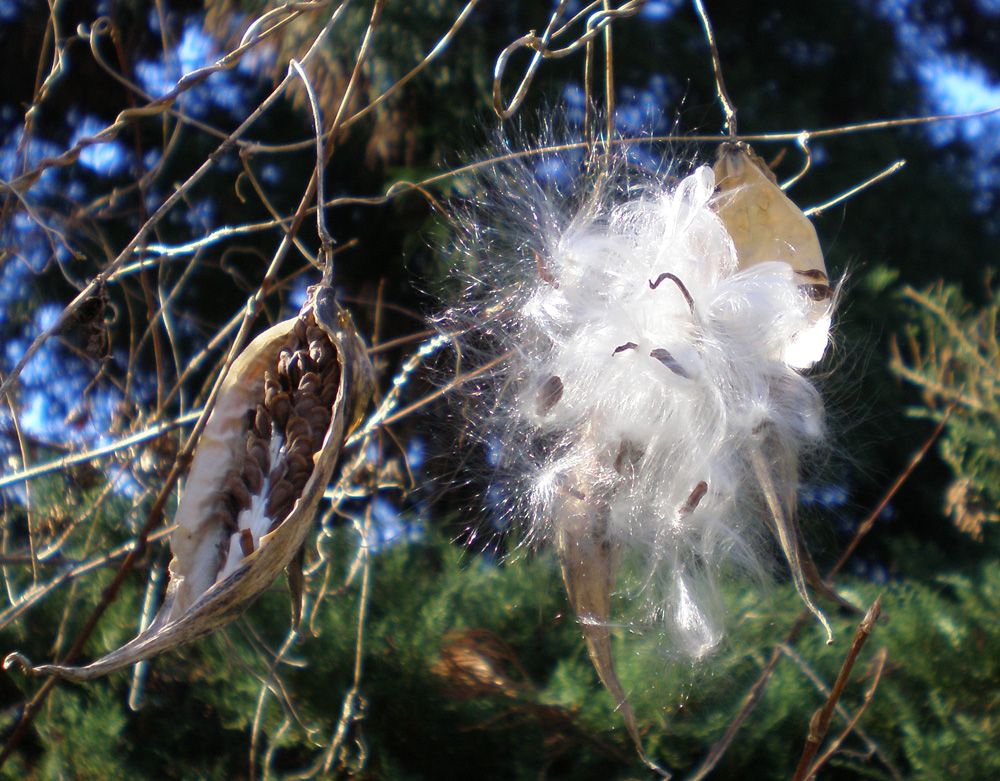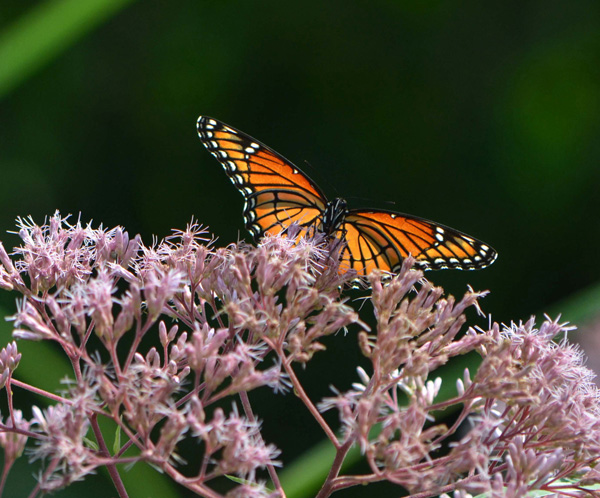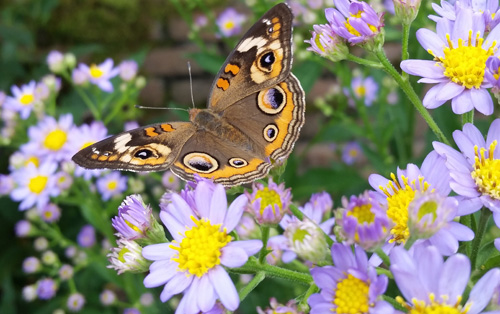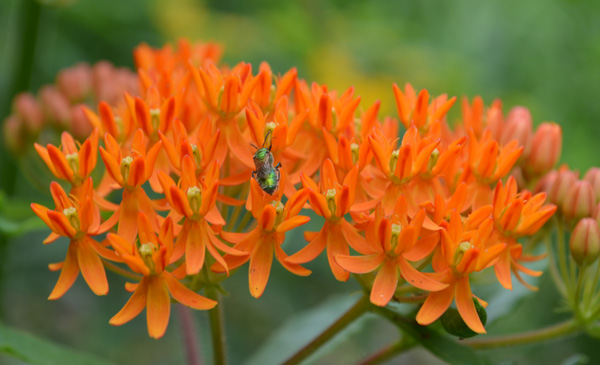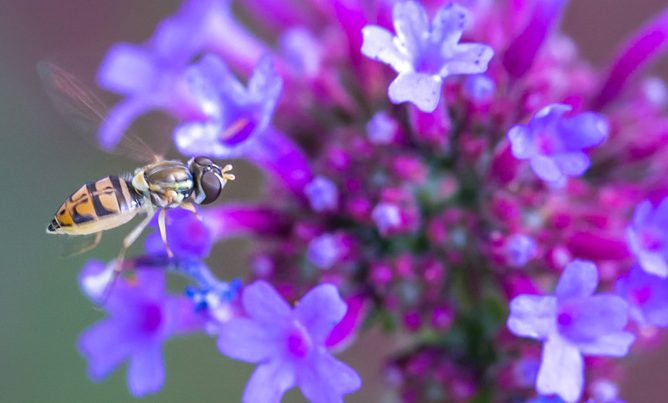The Best Plants For Attracting Butterflies in Virginia
Did visiting Butterflies LIVE! inspire you to plant to attract native pollinators? Bringing butterflies to your yard is a great project, beneficial for the butterflies and for humans too. A good butterfly habitat meets the needs of all stages of the butterfly lifecycle: eggs, caterpillars, chrysalis and adult butterflies. The ideal garden offers both nectar plants and host plants. Host plants provide a place for butterflies to lay their eggs and food for caterpillars. The best butterfly gardens are those that combine nectar and host plants together. Butterflies rely on a variety of nectar plants for food, but require very specific plants for laying their eggs because their caterpillars must feed on the leaves of particular species.
Using native plants to attract our native butterflies will meet their specific egg-laying preferences. But incorporating a few long-blooming annuals in your garden will also ensure a good, consistent supply of nectar. Butterflies like to bask in the sun, and it’s no coincidence that the plants they use for nectar or as host plants also like lots of sun too, at least four hours per day. Here are a few favorites.
Annual nectar plants:
Pentas, lantana, verbena (verbena can be an annual or a perennial), zinnia, salvia.
* Annuals do well both in the ground or planted in containers.
* The physical characteristics of these plants are good “fits” for the physical characteristics of the butterfly. They have flowers with petals providing a good landing pad and a short tube with a nectary at the base of the flowers.
* Pinch back spent flowers to promote future blooming to keep producing nectar for your fluttering beauties.
Perennial nectar plants:
Milkweed, be sure to get one of our natives: Asclepias tuberosa, Asclepias perennis, Asclepias verticillata, or Asclepias incarnata.
Monarda didyma or Monarda fistulosa – Bee Balm or Wild Bergamot
Coreopsis verticillata – Threadleaf Coreopsis
Phlox paniculata – Tall Garden Phlox
Symphotrichum novae-angliae – New England Aster
Rudbeckia hirta or Rudbeckia fulgida – Black-eyed Susan or Orange Coneflower
Echinacea purpurea – Eastern Purple Coneflower
Achillea millefolium — Yarrow
Eutrochium purpureum — Joe-pye weed
Which Butterflies you Might Attract
Eastern Tiger Swallowtail (Papilio glaucus) Virginia’s official state insect
Host Plants: Cherry, tulip tree, lilac, willow, ash, sweet-bay
Nectar Plants: Lilac, butterfly bush, ironweed, honeysuckle, lantana
Host Plants: Various members of the milkweed family
Nectar Plants: Milkweed, butterfly bush, thistle, goldenrod, Joe-pye weed, pentas, cosmos, lantana, zinnia
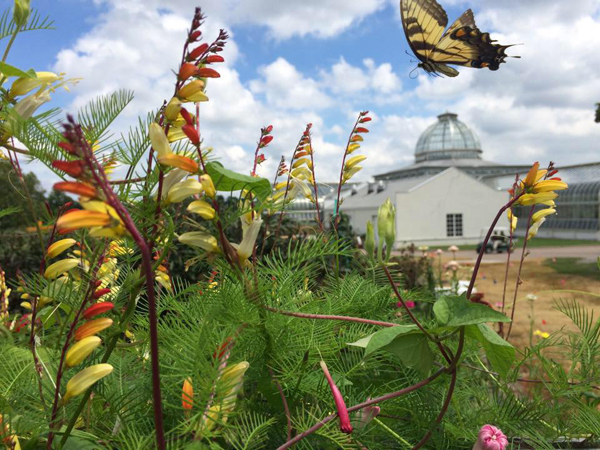
A tiger swallowtail in the Kroger Community Kitchen Garden getting nectar from Spanish flag, Ipomoea lobata.
The common plantain is the host plant for this beauty. You know the common plantain. No not the fruit silly. It’s a plant that you’ve likely seen in lawns. It has a broad leaf, and grows in most fields. Yet another reason to let your lawn fill with clover, plantain and other “weeds.”
Red-Spotted Purple (Limenitis arthemis)
A black and blue butterfly with a variety of color variations. It is often seen in the summer near streams where its larvae feed on willows, black cherry and birches.
Fritillary Butterflies
Gulf Fritillary (Agraulis vanillae) a rare visitor from the Deep South.
Host Plants: Native passionflower
Nectar Plants: Pentas, lantana, hibiscus, impatiens, daisy, passionflower.
Meadow fritillary (Boloria bellona)
Host Plants: Violets the northern white violet (Viola pallens) and woolly blue violet (V. sororia).
Variegated fritillary (Euptoieta claudia)
Host Plants: maypops (Passiflora incarnata), mayapple (Podophyllum peltata), violets (Viola), purslane (Portulaca), stonecrop (Sedum) and moonseed (Menispermum).
Great Spangled fritillary (Speyeria cybele)
Host Plants: violet species (Viola).
Source: Butterflies and Moths
Plant Milkweeds for Monarchs
Milkweed is the host plant for the Monarch butterfly (Danaus plexippus), but not just any milkweed is recommended. Tropical milkweed can bloom longer and potentially disrupt the natural migration of the Monarch butterfly, so the Garden cultivates only milkweed plants native to our climate, including:
• Swamp milkweed (Asclepias incarnata) — damp to wet soil; pink blooms; invasive tendencies.
• Common milkweed (Asclepias syriaca) — full sun; spreads by rhizomes; pink-purplish blooms.
• Butterfly weed (Asclepias tuberosa) — full sun; tuberous roots; tolerates dry conditions; orange-yellow blooms.
•Whorled milkweed (Asclepias verticillata) — full sun; spread by rhizomes; narrow, whorled leaves; whitish-green flowers; invasive tendencies; late-season host.
Should You Plant Butterfly Bush or Buddleia?
Buddleia is thought by some to be a bit aggressive spreading in our area. The Department of Conservation and Recreation does not list Buddleia as invasive plants, however, since we know that it has aggressive tendencies, we follow the recommendations of the US National Arboretum and carefully manage the spread of seedlings. If you are looking for something to attract butterflies there are lots of other good choices, and you may want to select a native species, that does not have this concern.
More resources:
University of Virginia’s list of Virginia Natives to Attract Butterflies
Xerces Society
